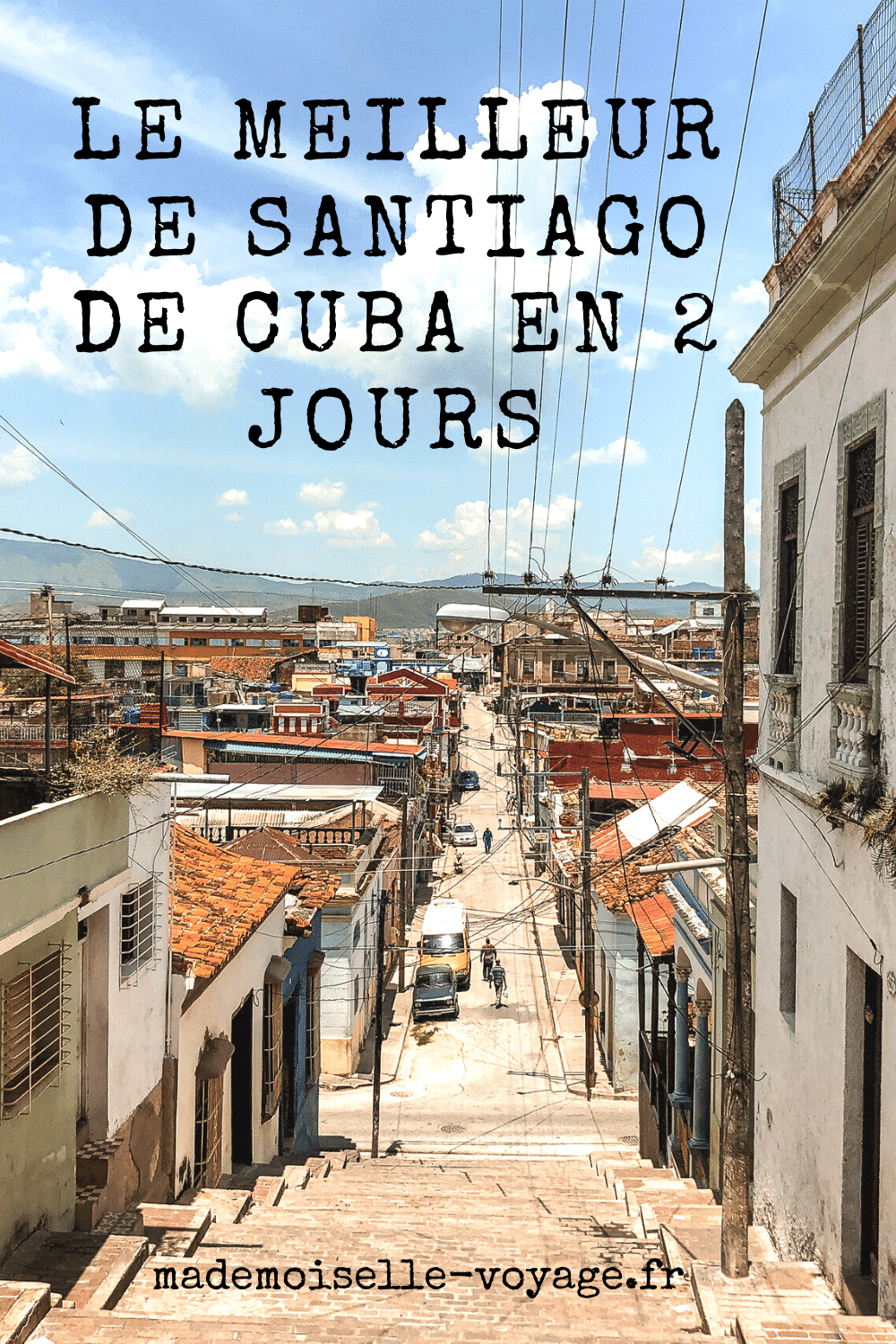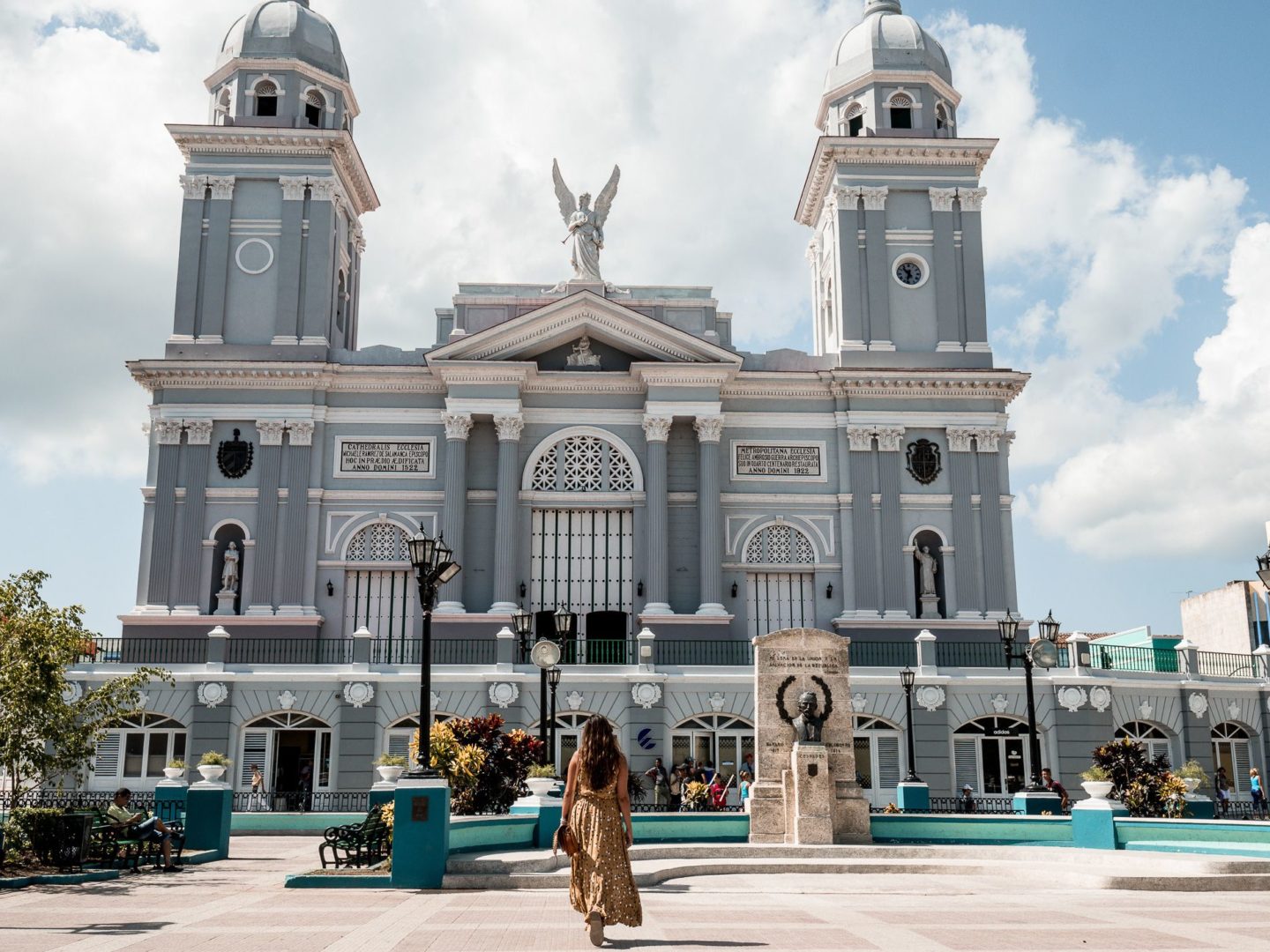
After Baracoa, it’s on to Santiago de Cuba, described as dangerous and often overlooked by travellers. Let’s discover this intriguing city, capital of Oriente.
We did a month-long roadtrip on the island. We also invite you to read our other articles on Cuba:
- Havana: 9 things to do in the capital
- Baracoa, Cuba’s best-kept secret
- The Viñales and Cayos Levisa and Jutias
- The practical guide to everything you need to know before leaving for Cuba
- What to see and do in Cienfuegos
- Playa Larga & Playa Giron
- Trinidad, the colonial pearl and its waterfalls
The last leg of our journey takes us to Santiago de Cuba in the east of the island. From Baracoa, a magnificent road, certainly the most beautiful we’ve driven in Cuba, takes you to this pretty town bursting with charm. Allow 5 to 6 hours for the journey, so you can stop and enjoy the scenery to the full. This road, nicknamed the “Farola” is a winding mountain road on its first section, with verdant scenery characteristic of Guantanamo province. Once we reach Cajobabo, the landscape becomes more arid, almost desert-like as it skirts the seaside. The vegetation is less lush, giving way to cactus, and the limestone terraces plunge into the sea in tiers… a truly astonishing contrast, adding a new palette to this beautiful island. We recommend stopping for a beach break at “Ranchon del Sur“, a small hidden cove overlooked by a small roadside restaurant for lunch if you wish. The service was quite long, but you’ll have to wait while you bathe. Remember to bring shoes for walking in the water, as there are sometimes sharp stones…
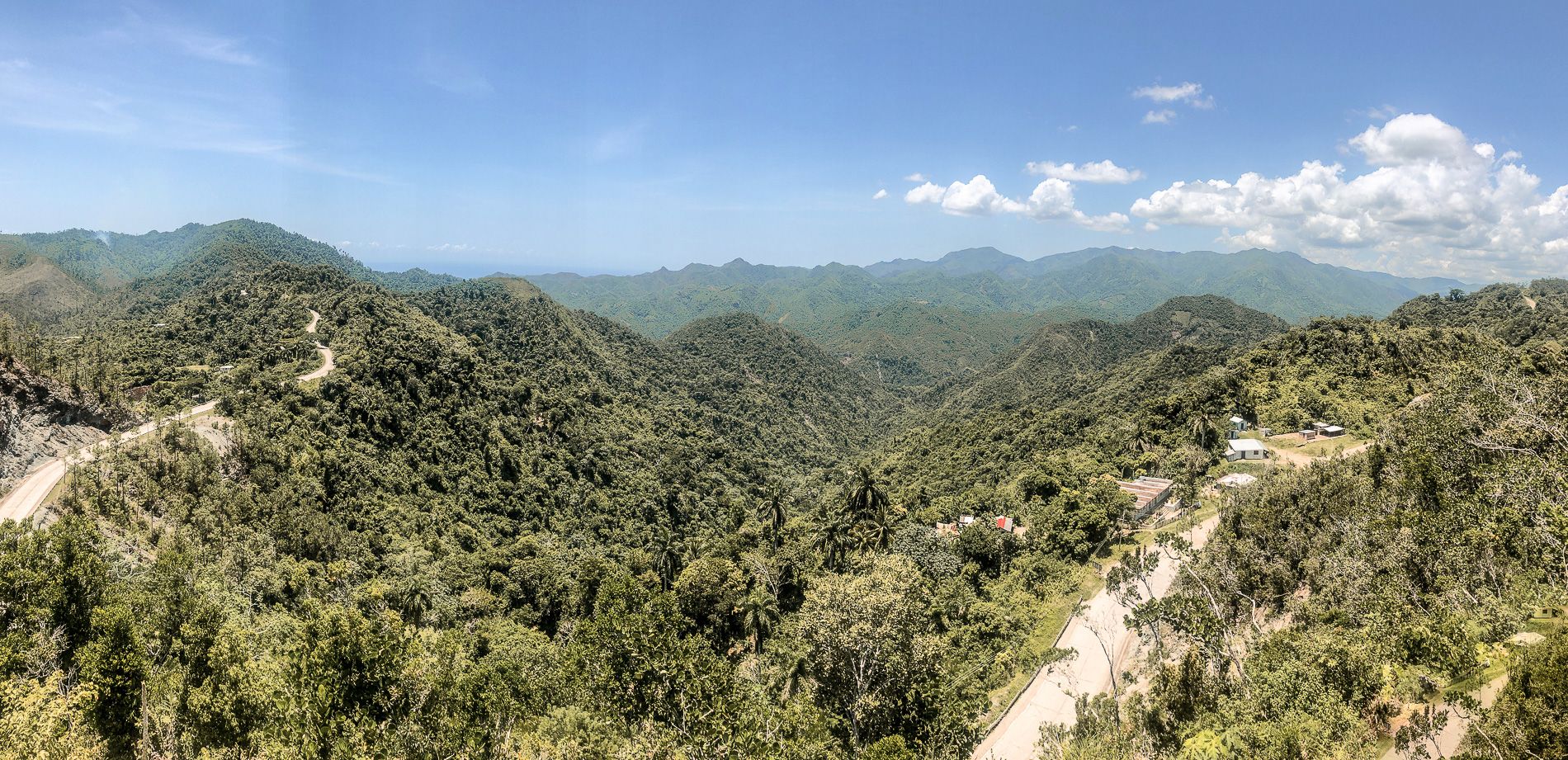
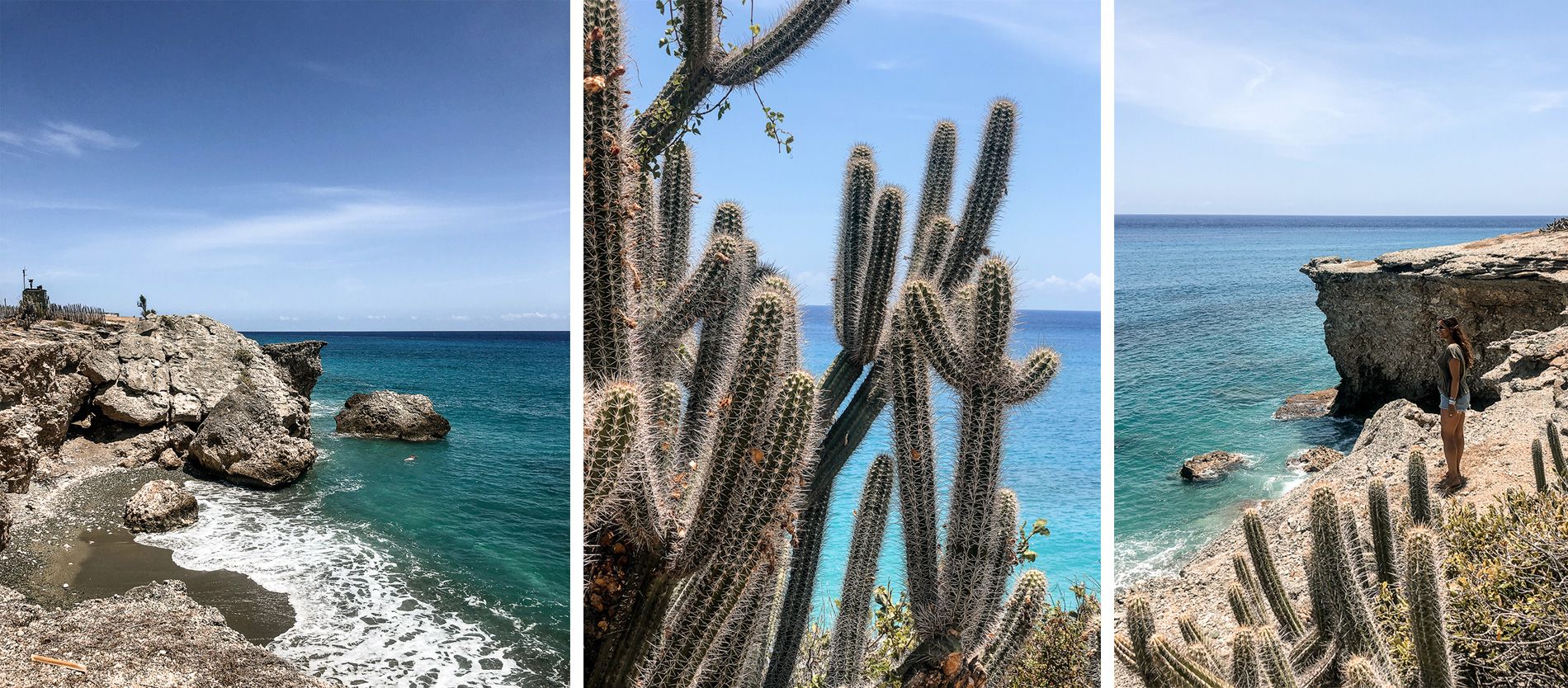
WHAT TO SEE AND DO IN SANTIAGO DE CUBA
______________________________________________
Santiago’s many attractions are mainly concentrated in the city’s hypercenter. Santiago de Cuba is the country’s second-largest city and capital of the province of the same name. Here, you’ll find a different atmosphere from the country’s other cities, especially Havana. It may not have been the administrative capital for many years, but it’s certainly still the cultural capital. As in all colonial towns, slavery was important to supply the neighboring sugar mills with labor. Its history has resulted in a larger black population than elsewhere on the island.A city of métissage with its blend of cultures, it was the birthplace of Compay Segundo, Cuban guitarist and singer who needs no introduction and remains today the the cradle of Cuban music. A number of local bands are emerging, performing at La Casa de la Trova or the Claqueta. You’d have to come to Santiago de Cuba in the month of March and during Carnival, in the second half of July because apparently it’s party time in the bars and on the streets. There are quite a few festivals and especially the carnaval lhe most colorful and lively of the Caribbean.
On the historical side, Santiago de Cuba was one of the first cities created by the Spanish, and was later a stronghold of colonization, with European and particularly French immigrants seeking their fortune in the colonies. Settling in the Tívoli district, they have left behind a legacy of French culture. The Alliance Française is active here, and it’s not uncommon to come across French speakers.
- Stroll through the historic district in an old American car
Like Havana, Santiago de Cuba lends itself well to a visit by old car. The alleyways are fairly narrow, allowing you to see most of the city. You can stroll on foot or by car through the historic center known as Casco Histórico, starting with one of the city’s most beautiful squares, the Parque Céspedes, surrounded by beautiful colonial architecture and the Casa Diego Velazquez, residence of Cuba’s first governor. Today, it’s the oldest house in Cuba. There’s also the pretty cathedral of “Nuestra Señora de la Asunción” to see. Destroyed several times, it has just been renovated following Hurricane Sandy in 2016. The car tour will take you to the Plaza Revolution visible from afar with its 23 machetes, the small shady square Plaza Dolores, Plaza de Marte with its 20-metre-high column, the emblematic district of Tívoli with its steep, narrow streets lined with houses and the famous Padre Pic staircaseo. We really enjoyed strolling through the city on foot, as it’s an opportunity to see some very unusual scenes: a pig with its throat cut in the street, a young man getting his hair done on a street corner, and a gentleman trying his best to paint a wall on a bamboo ladder.
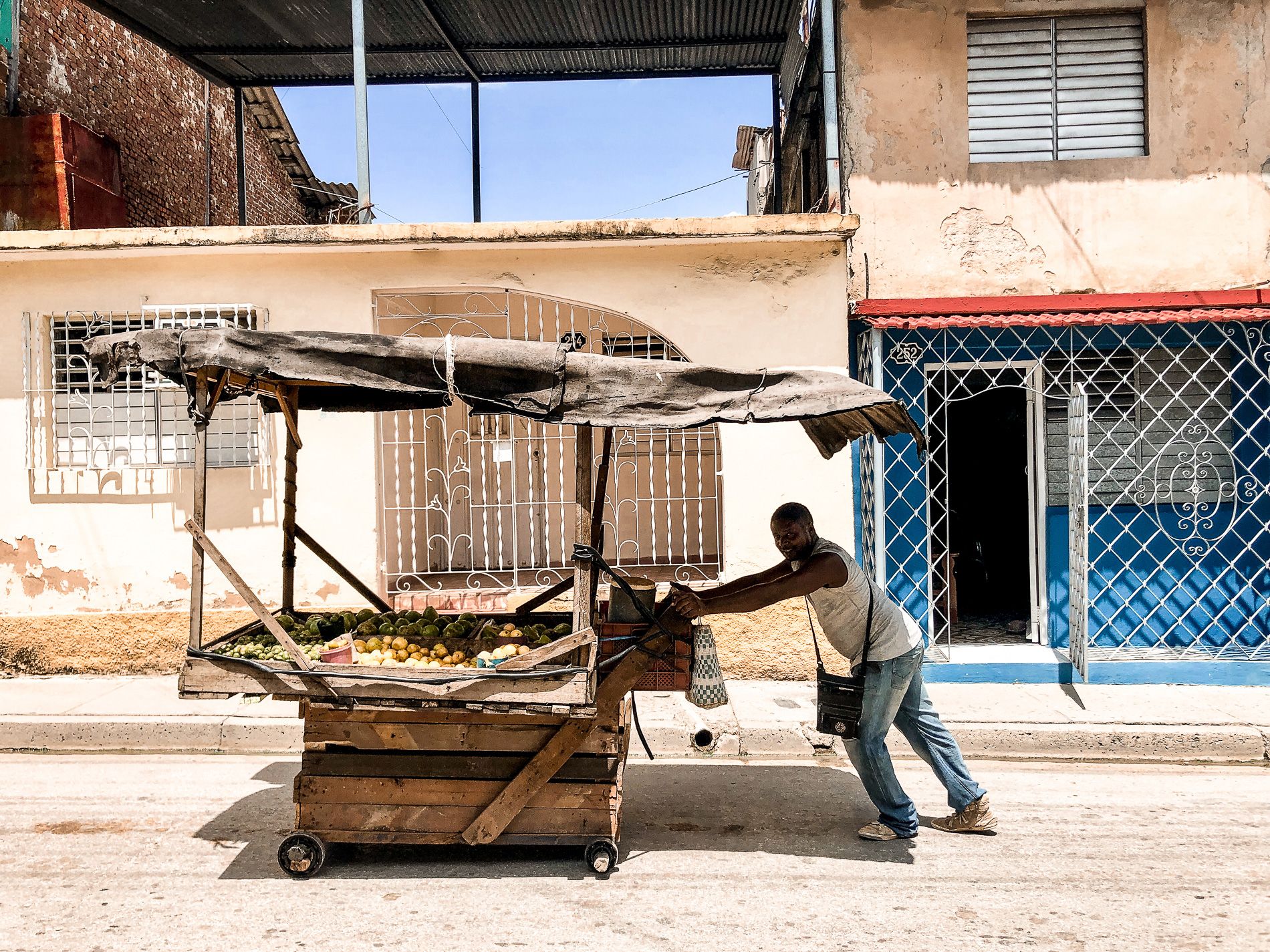
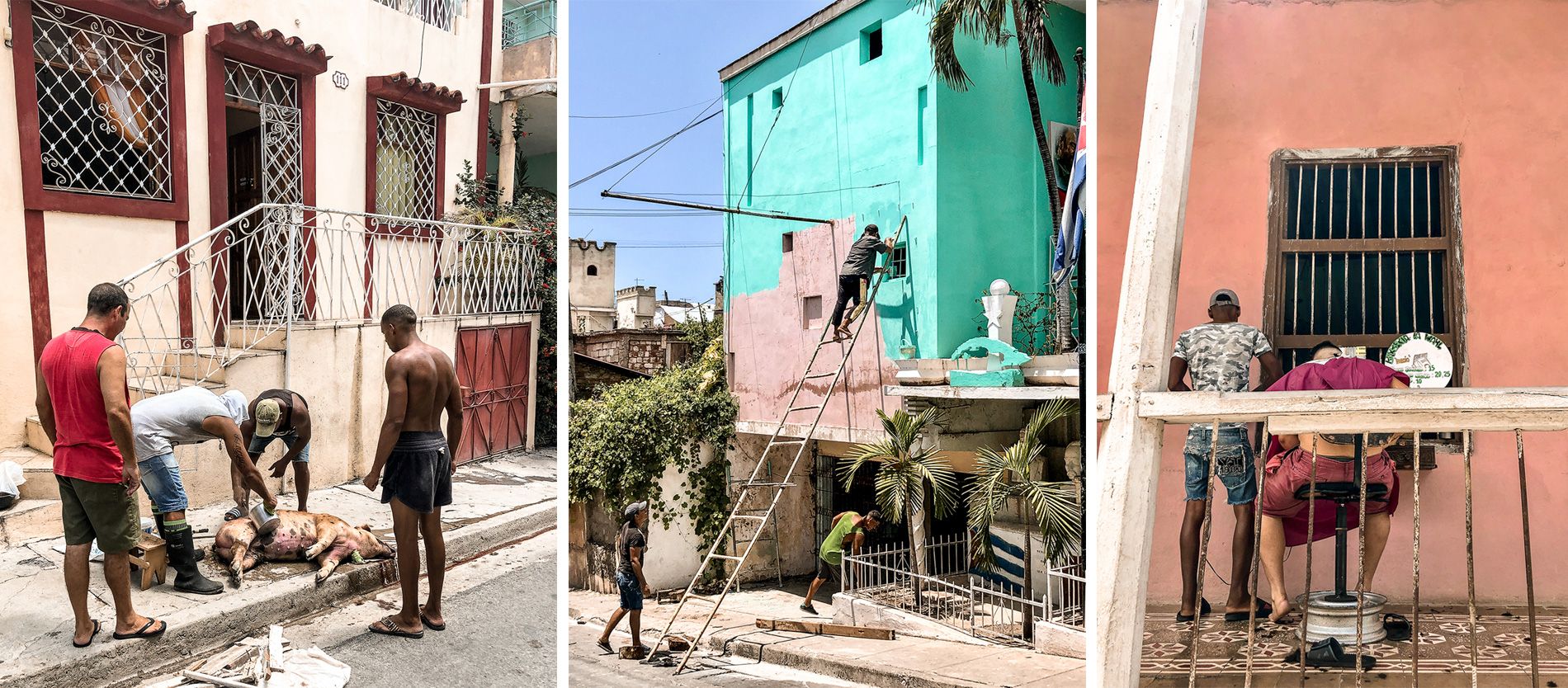
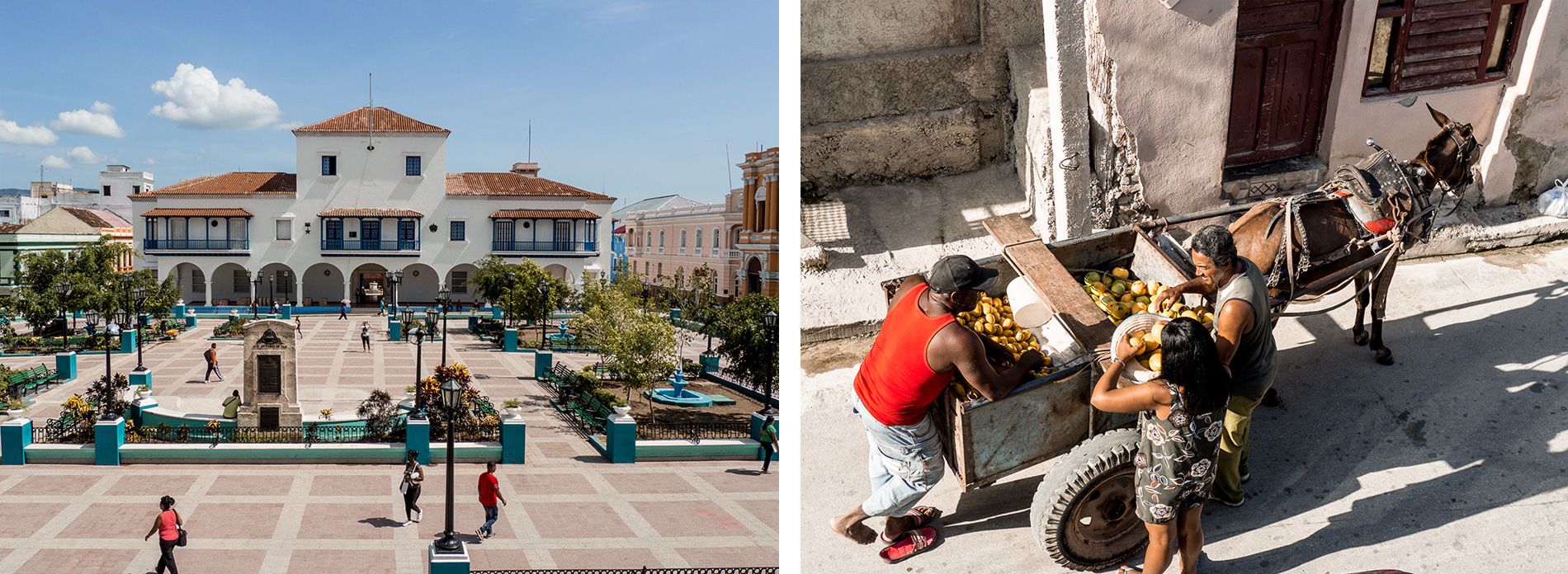
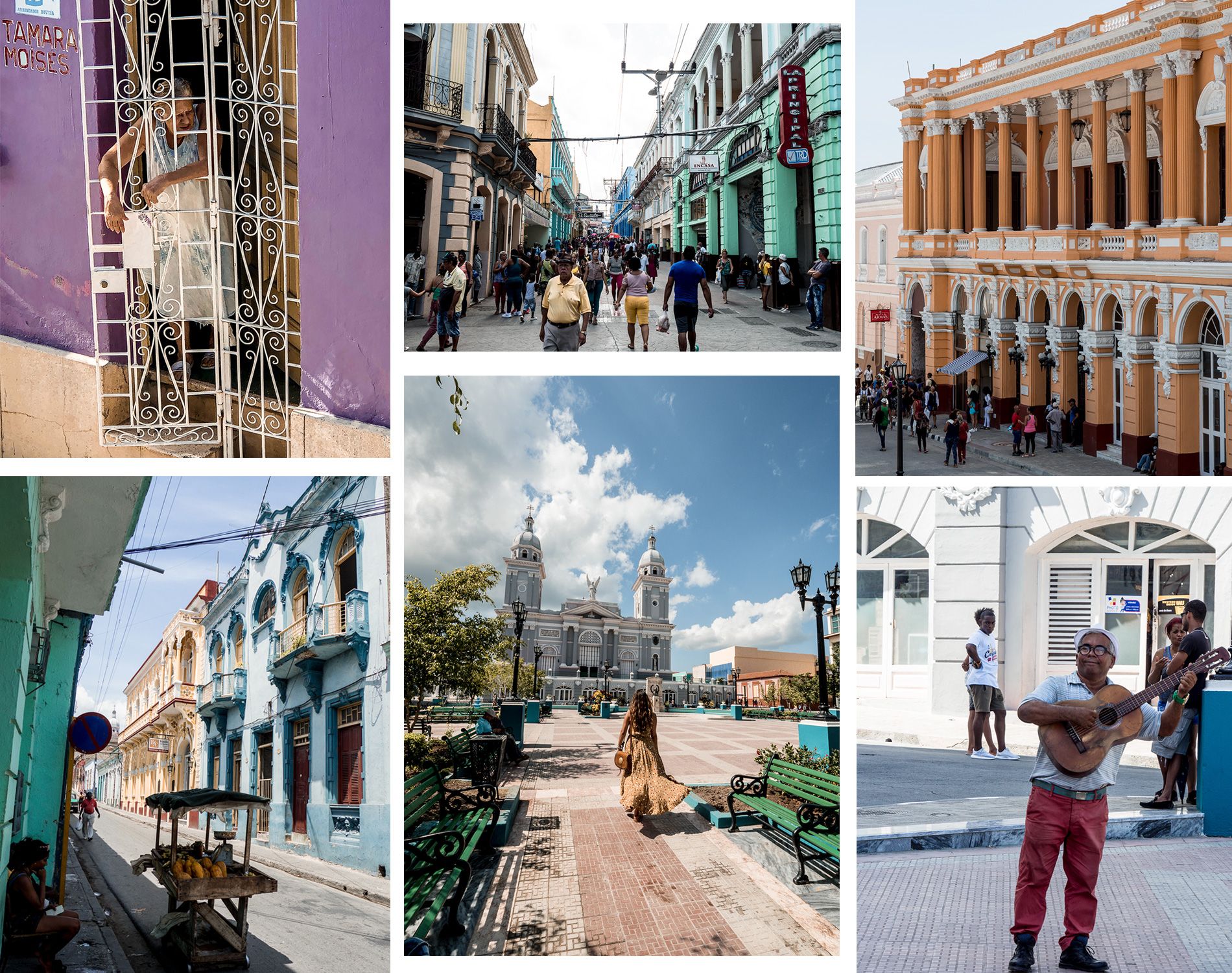
- Visiting the Fidel Castro cemetery
Santiago de Cuba was also the cradle of the Cuban revolution, spurred on by Fidel Castro, who founded his movement, the « M-26-7 ». For this reason, he is now buried in the cemetery ” Santa Ifigenia “just like many of the heroes of this revolution. A visit to the cemetery is well worthwhile just to see the fascination people still have for their former leader in a country that doesn’t seem to have made much progress since 1959. You will also find the tomb of Compay Segundo singer of the group Buena Vista Social Club, recognizable by his beautiful golden guitar, but also the founder of the distillery Bacardí. The most sacred part of the cemetery is the mausoleum of national hero José Martí, where a changing of the guard takes place every 30 minutes. Just to clarify, you have to pay to enter the cemetery… and yes, this is Cuba! From memory, count 1CUC per person minimum.
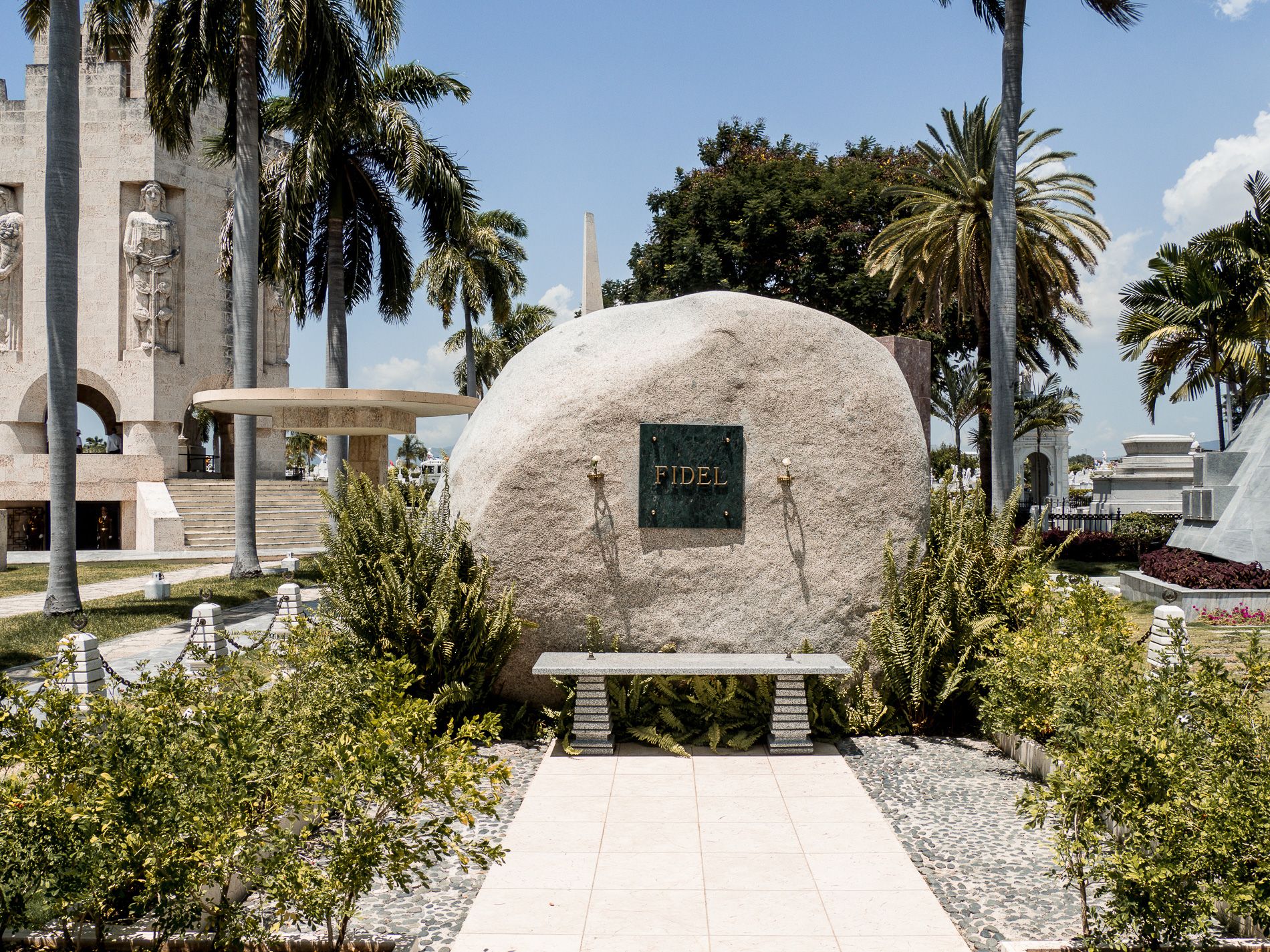
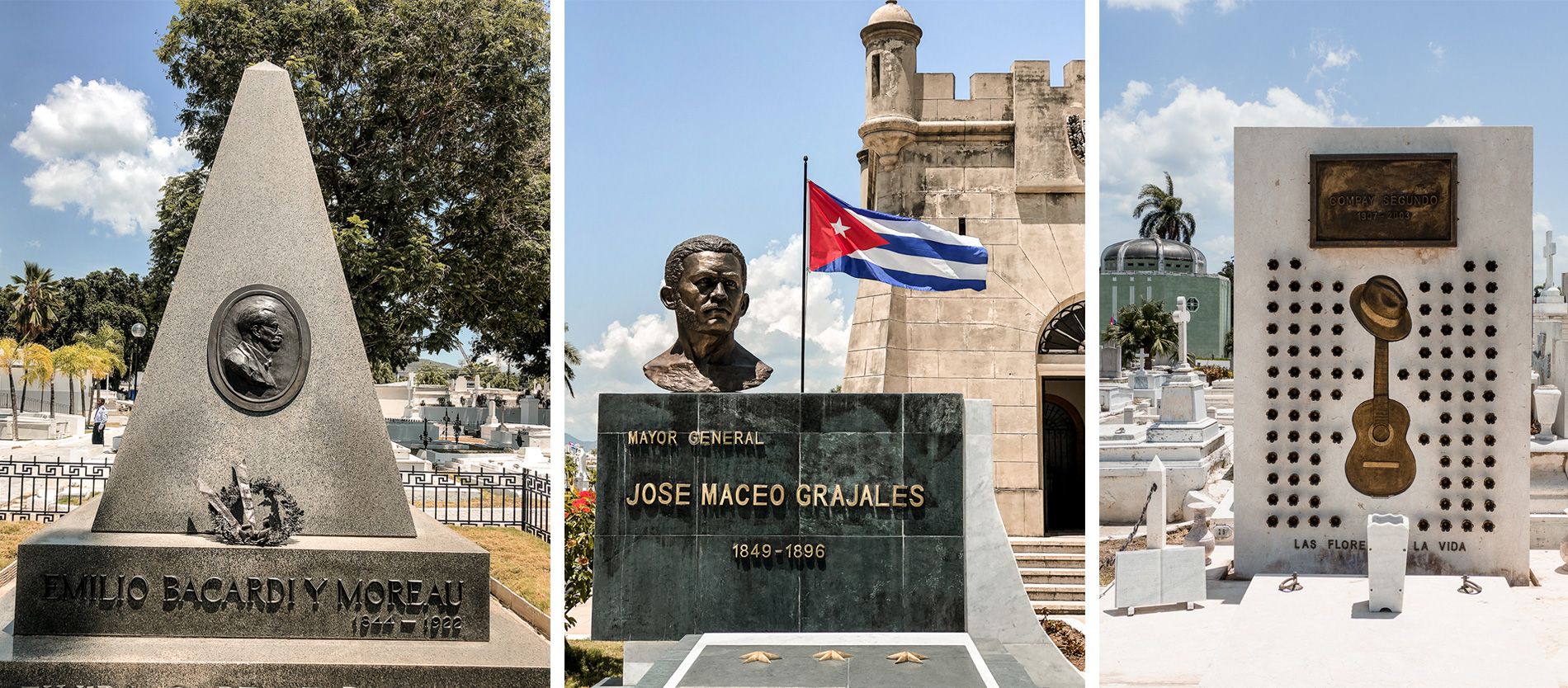
- A taste of Santiago de Cuba Rum
Discover the pretty Rum Museum in the old factories Bacardí. And yes, rum is also one of Santiago’s attractions. Bacardí developed a flourishing business here before fleeing the revolution in the USA. Rhum Santiago has since repossessed the plant, and it’s certainly the meilleur Rhum de Cuba. The visit to the museum is quick and interesting for those who have never seen how Rum is made. You can also buy bottles here, unless you find a better deal outside, because don’t forget that the black market still predominates in Cuba. (We’ve seen 15 CUC for a bottle of 11-year-old rum on the street, compared with 35 CUC at the museum and 40 CUC in downtown stores). Note above all that this Rum is of very good quality and that it must be in your suitcase for the return trip, as you won’t find it in Europe and hardly ever in Cuba.
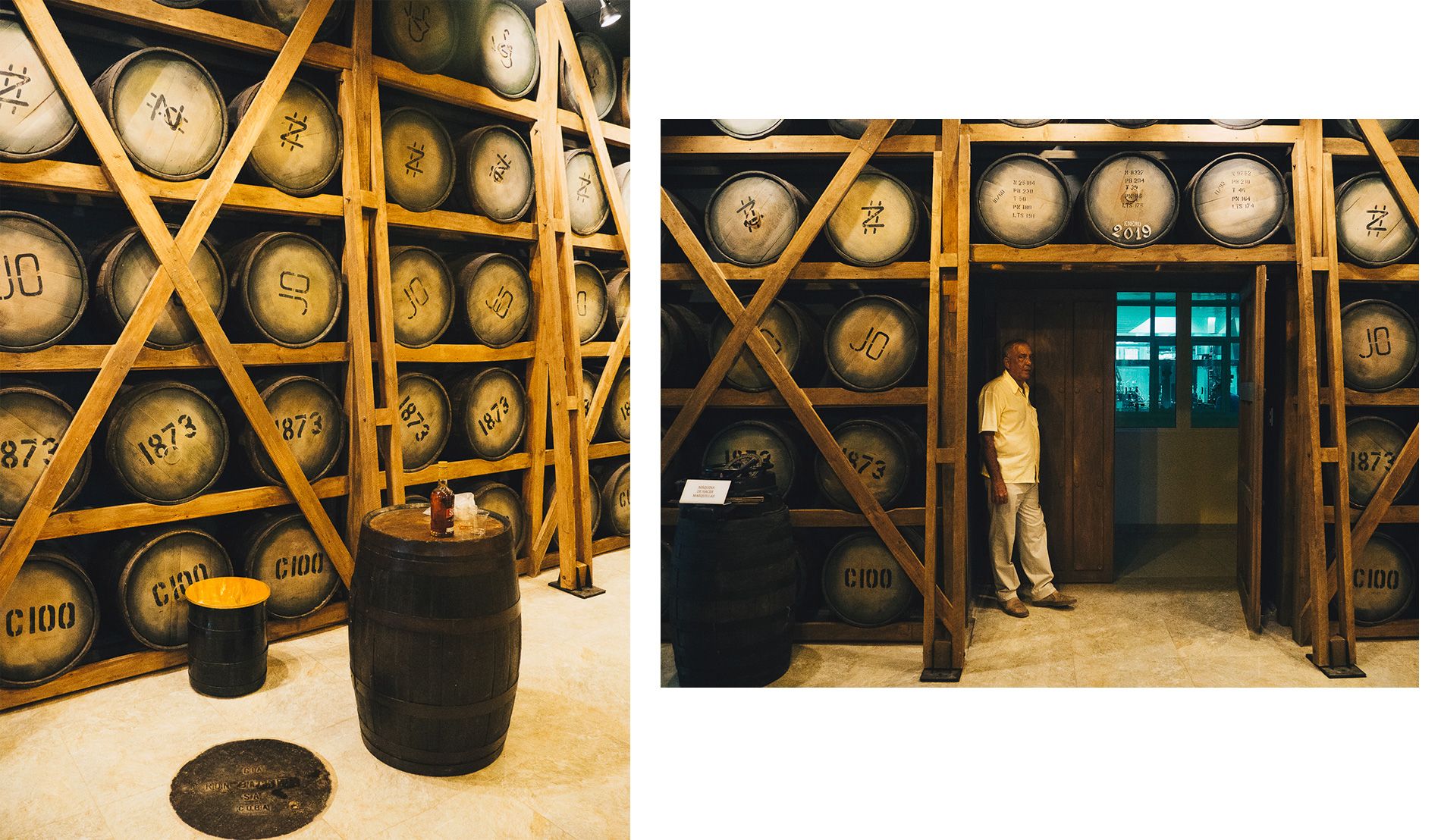
- Dance and drink at Casa de la Trova
Casa de la Trova is the temple of Cuban music in Santiago de Cuba. In the late afternoon, musicians perform (check daily) and from 11pm, locals and travellers come to dance the salsa. It’s the place to be for Cuban music lovers!
- Santiago’s surroundings: Beaches, religion and history
To visit the city, a full day will suffice, unless you want to go deeper. 10 km from downtown Santiago, you can then see the San Pedro de la Roca castle, also known as Castillo del Moro and Unesco World Heritage Site since 1997. This 17th-century multi-storey stone fortress was built on a rocky promontory overlooking the bay. Also 20km from the town is the basilica “Santuario Nacional de Nuestra Señora de la Caridad ” in the town of del Cobre. The name’s a bit long, but the Virgin is said to have made an apparition there, so it’s now a holy place. Due to lack of time, we weren’t able to get there, so we won’t tell you any more.
- Casa Consuelo – Pavel’s house
A 30-minute drive from Santiago de Cuba, we chose to take the road to Caletón to find an atypical location, the « Casa Consuelo Playa Blanco », the best restaurant we’ve tried in Cuba, we swear! Pavel, a character like many we’ve met in Cuba, is a true self-taught entrepreneur and, above all, a lover of food.
He cut his teeth in France before returning home. There, he opened his restaurant on the edge of a small sandy beach, the Playa Blanco, with a French, Corsican and above all Cuban touch, offering a Cuban-Mediterranean fusion. Various areas of the garden have been designed to welcome customers. You’ll feel like you’re in a friend’s garden overlooking the sea in the south of France, or in a Corsican straw hut. And I can tell you that the lobsters, langoustines and grilled fish having been previously marinated as well as the fabulous calamars in sauce won’t do you any harm after several weeks in Cuba. Indeed, the diversity of flavors is not really marked and Cuban cuisine is not renowned.
Pavel has succeeded in surrounding himself with a high-performance team, to create a project close to the area, with local people who know absolutely nothing about catering but are keen to learn. A more than honorable move for a man with a big heart, who donates part of the restaurant’s profits to an association that helps local children with health problems. He also welcomes schools to his restaurant for educational projects around cooking, and has just opened another restaurant in Santiago, “L’époque“, with a French-Cuban fusion concept. The idea is to offer aperitifs with tapas, good wines, cocktails, good rum and good cigars. Cooking classes and Cuban cocktail courses will soon be available. Daiquiris, Pina Coladas and Caipirinhas with friends on the way home.
Next to the restaurant is a small, peaceful beach, so don’t forget to bring your swimsuit and waterproof shoes.
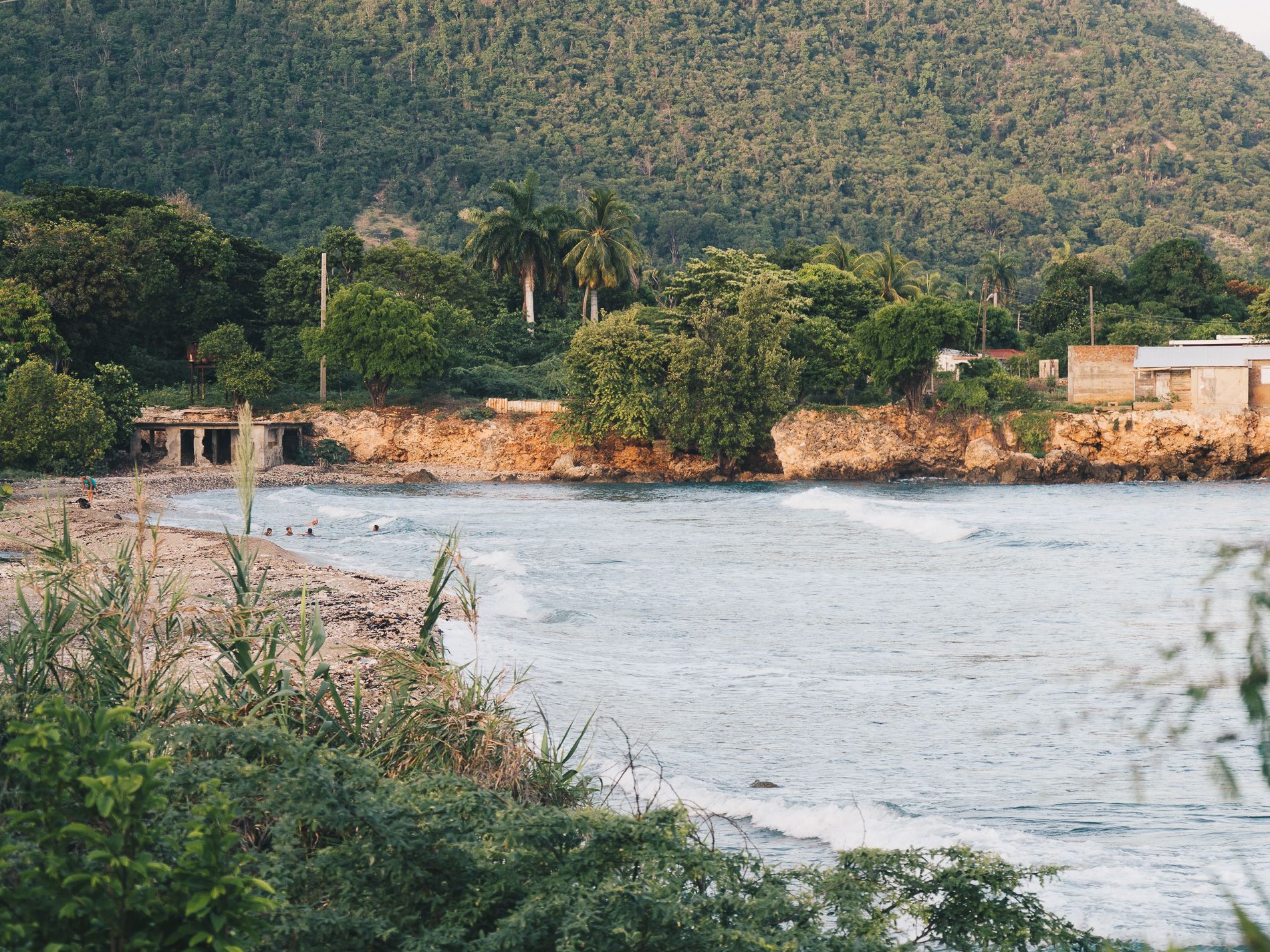
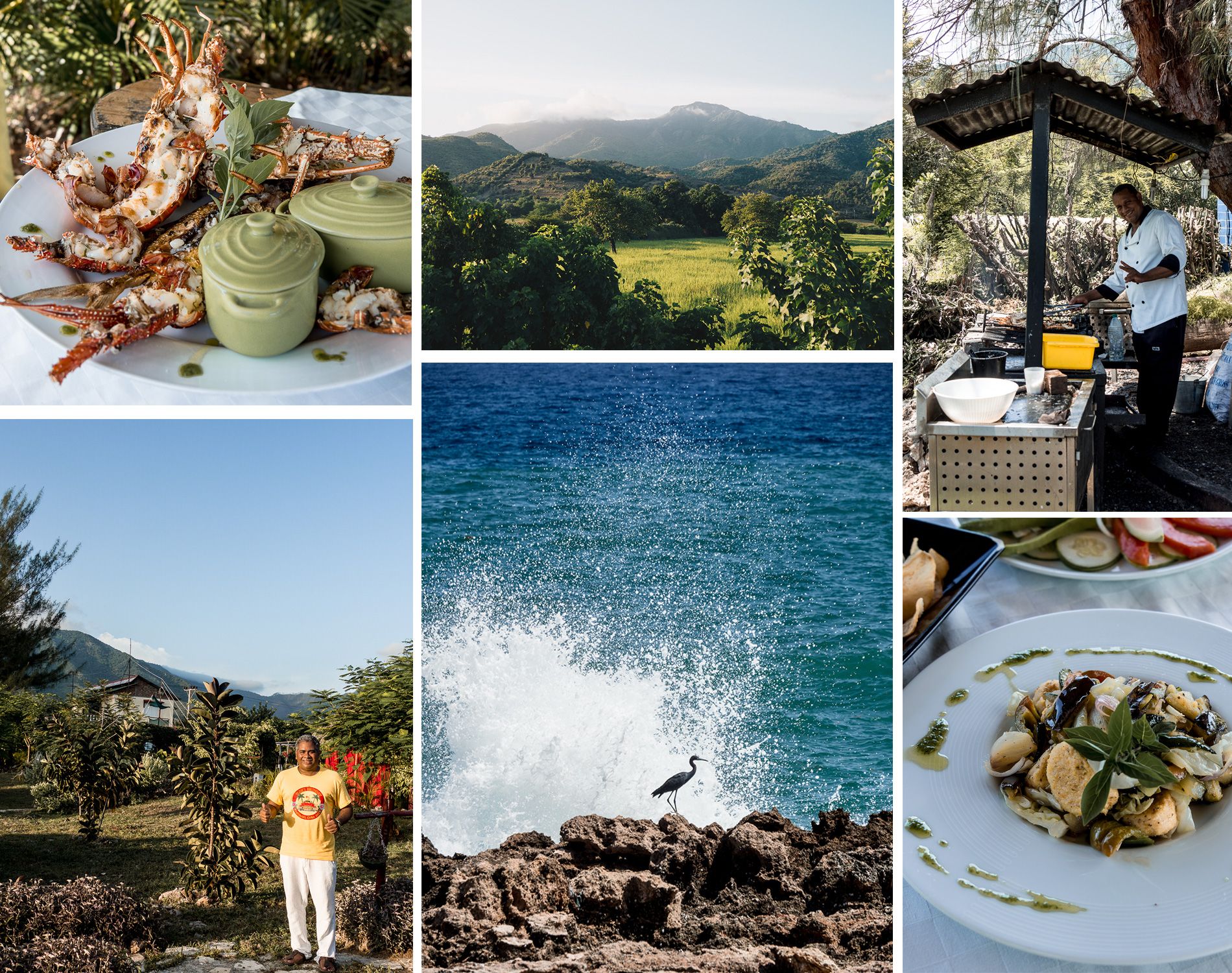
As in most of Cuba, you’ll find all kinds of casas, ranging from 5 CUC a night to around 50 CUC a night. The price difference comes down to service, quality of welcome, breakfast, location, cleanliness of rooms… During my trip to Cuba, I selected some very pretty casas in Santiago de Cuba that I’m keeping carefully for my customers who have booked a trip to Cuba with our agency.
- In the heart of the city, at the legendary 4* hotel Cubanacan Casagranda and its beautiful view of the square. A special highlight is the panoramic terrace on the hotel’s top floor, with an almost 360-degree view of Santiago de Cuba.
- The hotel San Basilio
- The hotel San Juan
- The hotel Melia Santiago
- Villa Oquendo Treasure
- We had lunch by the Padre Pico steps. The belvedere is nice to look at and the restaurant is quite good.
- Paladar Terraza, calle Aguilera, price 19 CUC for two people. It’s in high demand and often fully booked. Upstairs there’s a bar with a view of the church.
- Terrazas La Caridad, avenida del Rio #3
- Roy’s Terrace Inn
- Iré in Santiago
- Rumba café
- Restaurante Aurora (General Moncada and Calvario)
- Visit Barrita de Ron to taste the various local rums
- Roy’s Terrace Inn
- On the terrace of the 4-star hotel* Cubanacan Casagranda
- See you in the calle Heredia, one of the most vibrant and lively streets in Santiago de Cuba. Cubans come here to have fun all night long.
- Enjoy an evening drink on the Malecon
- La Casa de la Trova: entrance 5 CUC/p
- Entrance to Santiago de Cuba cemetery: minimum 1CUC/p
Practical information Santiago de Cuba
Santiago de Cuba nous laissera un très bon souvenir, celui d’une ville vibrante où l’on a rencontré de supers cubains et cubaines dans une atmosphère décontractée. Sachez que Cuba, n’est pas une destination bon marché et qu’il vous faudra un petit budget pour visiter l’île. Si vous souhaitez un devis pour la destination, merci de m’envoyer votre demande à contact@mademoiselle-voyage.fr. Pour tous ceux qui veulent y aller en août, il faut vous y prendre à l’avance, on commence souvent les réservations pour nos clients à partir de janvier car cela nous permet d’avoir du choix en terme de casas et de trouver rapidement une voiture. Nous vous invitons à lire également tous nos autres articles sur Cuba:
- La Havane: 9 choses à faire dans la capitale
- Baracoa, le secret le mieux gardé de Cuba
- La région de Viñales et les Cayos Levisa et Jutias
- Le guide pratique pour tout savoir avant de partir à Cuba
- Que voir et que faire à Cienfuegos
- Playa Larga & Playa Giron
- Trinidad la perle coloniale et ses cascades
N’oubliez pas d’épingler l’article sur Pinterest pour le retrouver plus facilement 🖤
